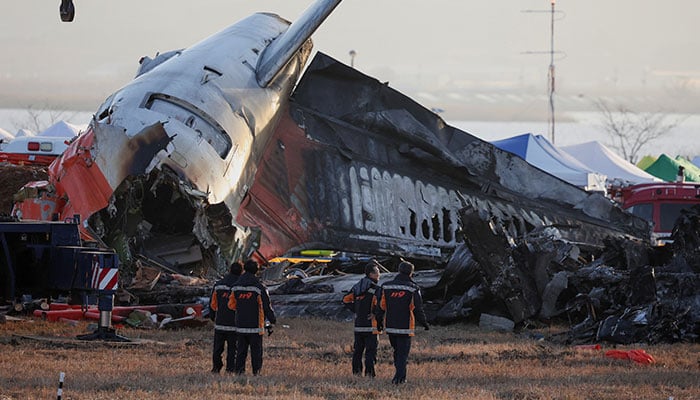
The plane, flight number 2216, burst into flames as it crashed onto the concrete at the end of the runway. Taipei, Taiwan – More than two days into the investigation of the fatal crash of Juju Air Flight 2216, aviation professionals were left wondering what the concrete structure located at the end of the runway at Muan International Airport in South Korea might have had to do with the crash, among other factors.
The Boeing 737-800 crashed into a concrete embankment. It erupted into flames after being forced to make an emergency landing on Sunday morning, killing 179 of 181 people on board in the deadliest-ever plane crash on South Korean soil.
After failing to deploy its landing gear and overshooting the landing zone, The pilot reported a bird strike to air traffic control moments before the aircraft belly-flopped on the runway.
South Korean authorities have said the concrete embankment, which housed a localiser antenna to help pilots maintain the correct approach path, was built according to regulations and similar to other structures at airports worldwide.
However, some aviation experts have questioned the choice and placement of the structure, suggesting that the disaster may have been avoidable with better airport design.



